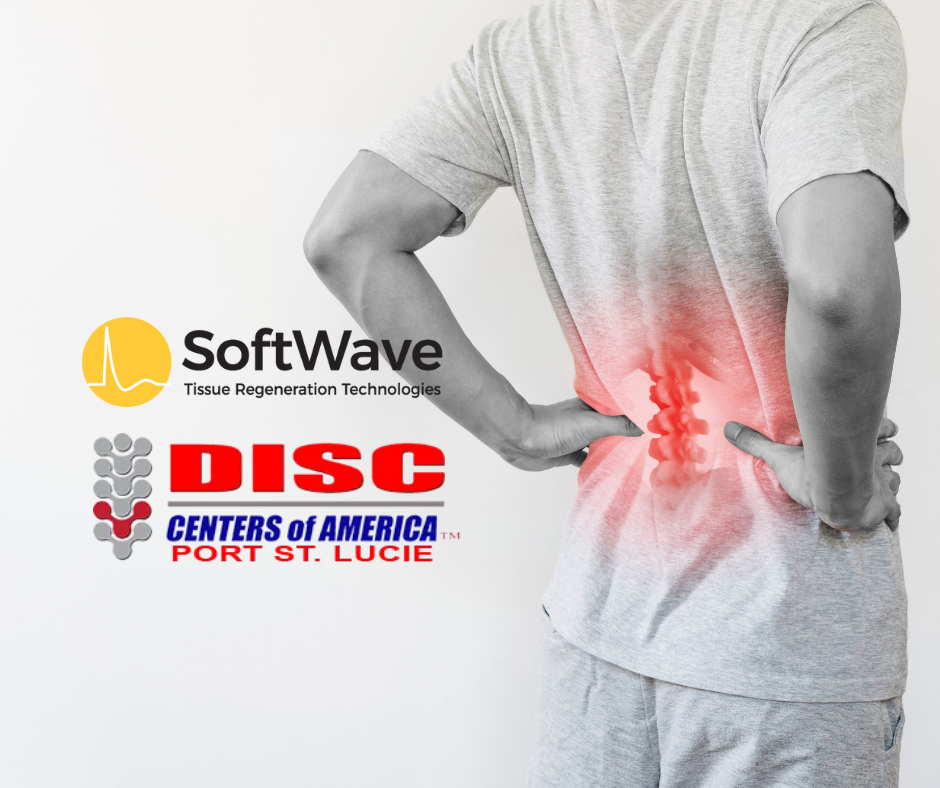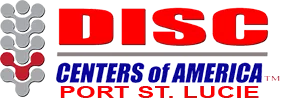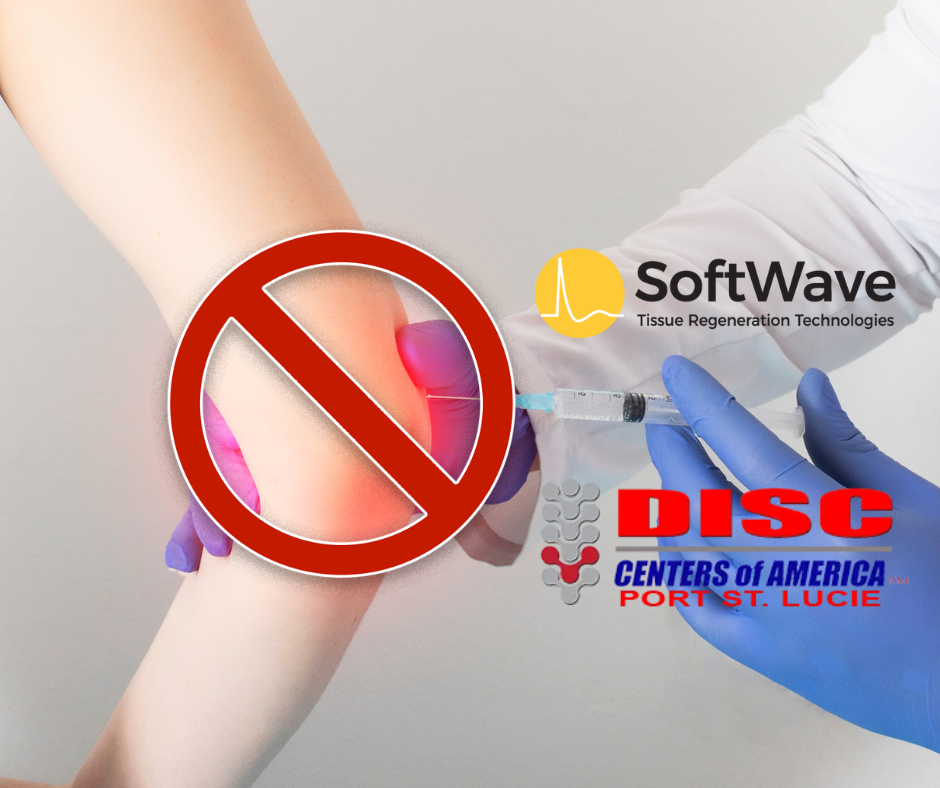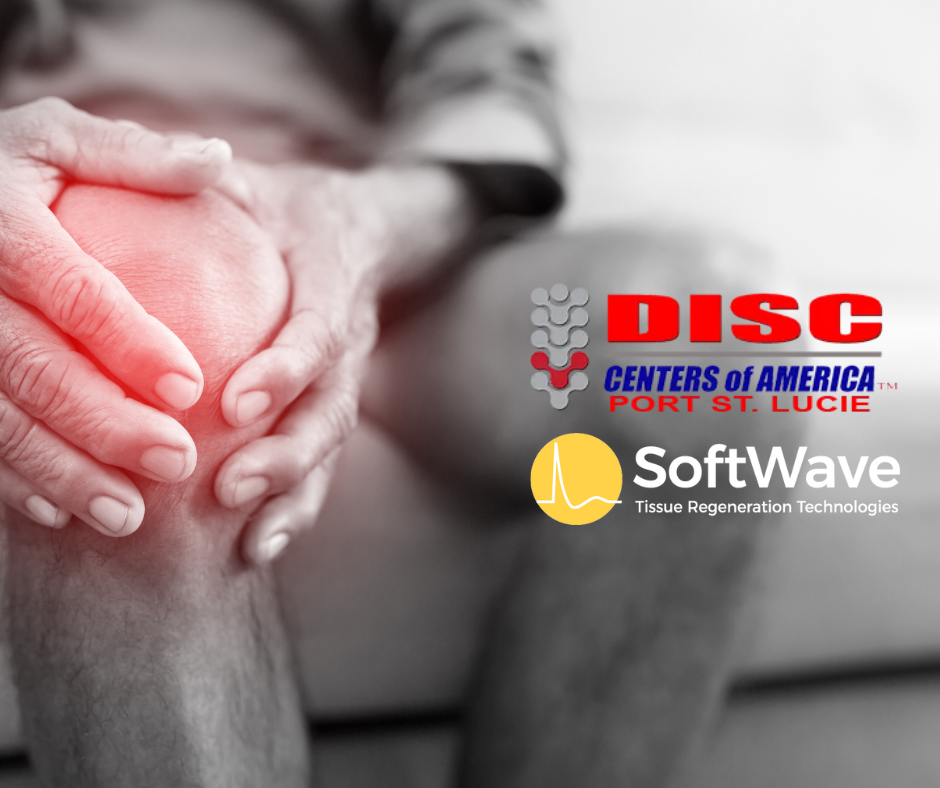Blog
Can SoftWave and Spinal Decompression Heal Lumbar Disc Herniations Without Surgery?

Lumbar spine disc herniations are a common cause of back pain and discomfort that can severely limit daily activities. When the discs in the lower spine become damaged or displaced, they can press on surrounding nerves, causing pain, numbness, and even weakness in the legs. While surgery is often recommended for severe cases, SoftWave Tissue Regeneration Technology combined with spinal decompression therapy offers a non-invasive, drug-free alternative to help patients heal and regain their quality of life.
At Disc Centers of America - Port St. Lucie, Dr. John Grassam utilizes these advanced therapies to help patients recover from disc herniations naturally, reducing pain and promoting long-term healing. In this blog, we’ll explore the types of disc herniations, their causes and symptoms, and how SoftWave Therapy and spinal decompression can provide effective relief.
Understanding Lumbar Spine Disc Herniations
The lumbar spine consists of five vertebrae (L1-L5) that are separated by intervertebral discs. These discs act as cushions between the vertebrae, absorbing shock and providing flexibility to the spine. Each disc has a tough outer layer called the annulus fibrosus and a soft, gel-like inner core called the nucleus pulposus.
A disc herniation occurs when the nucleus pulposus pushes through a tear or weak spot in the annulus fibrosus, causing the disc to bulge or rupture. This displaced disc material can press on the spinal nerves, leading to pain, numbness, and other symptoms.
Types of Disc Herniations
There are several types of lumbar disc herniations, each varying in severity and treatment options:
- Contained disc herniation: In a contained herniation, the disc material bulges outward but remains within the annulus fibrosus. The disc may not fully rupture but still causes pressure on nearby nerves.
- Non-contained disc herniation: In this case, the nucleus pulposus has broken through the outer annulus fibrosus, causing the disc material to spill out into the spinal canal. This can put direct pressure on the spinal nerves, leading to more severe symptoms.
- Sequestered disc herniation: A sequestered disc herniation is the most severe form, in which the disc material has completely separated from the disc and is floating freely in the spinal canal. This often results in significant pain and may require more aggressive treatment.
Causes of Lumbar Disc Herniations
A lumbar disc herniation can occur due to several factors, including:
- Age-related degeneration: As we age, the spinal discs lose water content and flexibility, making them more susceptible to herniation.
- Injury or trauma: Sudden injuries, such as lifting heavy objects improperly or a fall, can cause a disc to rupture or bulge.
- Repetitive stress: Repeated bending, twisting, or heavy lifting over time can weaken the outer layer of the disc, leading to herniation.
- Poor posture: Slouching or maintaining improper posture for extended periods can place additional stress on the spine, increasing the risk of disc herniation.
Symptoms of Lumbar Disc Herniations
The symptoms of a lumbar disc herniation can vary depending on the severity of the herniation and which nerves are affected. Common symptoms include:
- Lower back pain: Pain in the lumbar region that may worsen with movement or prolonged sitting.
- Leg pain (sciatica): A herniated disc can press on the sciatic nerve, causing pain that radiates down the leg and into the foot.
- Numbness or tingling: Patients may experience numbness or tingling in the lower back, buttocks, legs, or feet.
- Muscle weakness: Nerve compression from a herniated disc can cause muscle weakness in the legs, making it difficult to walk or stand.
- Loss of mobility: Severe pain and stiffness in the lower back may limit range of motion and mobility.
Healing Disc Herniations Naturally with SoftWave Therapy and Spinal Decompression
For patients dealing with lumbar disc herniations, SoftWave Therapy combined with spinal decompression offers a non-surgical, drug-free treatment that promotes healing and pain relief. These therapies work together to reduce pressure on the affected nerves and stimulate tissue regeneration, helping patients recover naturally.
1. SoftWave Tissue Regeneration Technology: Promoting Healing at the Cellular Level
SoftWave Therapy is an advanced treatment that uses supersonic acoustic waves to stimulate the body’s natural healing processes. This therapy is especially effective for treating disc herniations because it helps:
- Reduce inflammation: SoftWave Therapy modulates the body’s inflammatory response, reducing swelling and nerve irritation caused by the herniated disc.
- Stimulate tissue regeneration: The acoustic waves activate stem cells and promote the repair of damaged tissues, including the annulus fibrosus and surrounding structures.
- Accelerate recovery: SoftWave Therapy improves blood flow to the injured area, speeding up the delivery of oxygen and nutrients needed for tissue healing.
By addressing the root cause of the pain and promoting long-term healing, SoftWave Therapy provides a natural alternative to surgery or injections for lumbar disc herniations.
2. Spinal Decompression Therapy: Relieving Pressure on the Nerves
Spinal decompression therapy is a non-invasive treatment that gently stretches the spine, creating negative pressure within the discs. This helps:
- Relieve nerve pressure: By decompressing the spine, the bulging or herniated disc material is pulled back into place, reducing the pressure on the spinal nerves.
- Promote nutrient flow: Spinal decompression improves the flow of oxygen, water, and nutrients to the spinal discs, enhancing the body’s natural healing process.
- Improve disc health: Decompression therapy can help re-hydrate and restore the health of the spinal discs, preventing further degeneration.
When combined with SoftWave Therapy, spinal decompression offers a comprehensive approach to treating lumbar disc herniations, providing pain relief, improved mobility, and faster recovery.
3. The Benefits of Combining SoftWave and Spinal Decompression for Disc Herniations
- Non-invasive and drug-free: These therapies offer a natural solution without the risks of surgery or medications.
- Fast pain relief: Patients often experience immediate improvements in pain after their first session, with continued improvements over time.
- Long-term healing: SoftWave Therapy promotes cellular repair, while spinal decompression helps restore spinal alignment and disc health.
- Avoid surgery: Many patients are able to avoid invasive procedures by choosing this conservative treatment plan.
Get Relief from Lumbar Disc Herniations with Dr. John Grassam at Disc Centers of America - Port St. Lucie
If you’re struggling with the pain and limitations of a lumbar disc herniation and are looking for a non-surgical, effective treatment, SoftWave Therapy combined with spinal decompression at Disc Centers of America - Port St. Lucie can help. Dr. John Grassam and his expert team are dedicated to helping you heal naturally, providing long-lasting relief from disc herniations.
Contact Us Today for SoftWave and Spinal Decompression Therapy
Ready to heal your lumbar disc herniation naturally with SoftWave Therapy and spinal decompression? Contact Disc Centers of America - Port St. Lucie today to schedule your consultation with Dr. John Grassam.
Disc Centers of America - Port St. Lucie
555 NW Lake Whitney Place, Ste. 105
Port St. Lucie, FL 34986
Phone: 772-237-2080
Visit us at: https://portstluciedisccenter.com
Request an appointment here: https://www.softwaveportstlucie.com/contact
Discover how SoftWave Therapy and spinal decompression can help you recover from lumbar disc herniations, reduce pain, and regain your mobility naturally!
‹ Back







 555 NW Lake Whitney Place Ste. 105
555 NW Lake Whitney Place Ste. 105